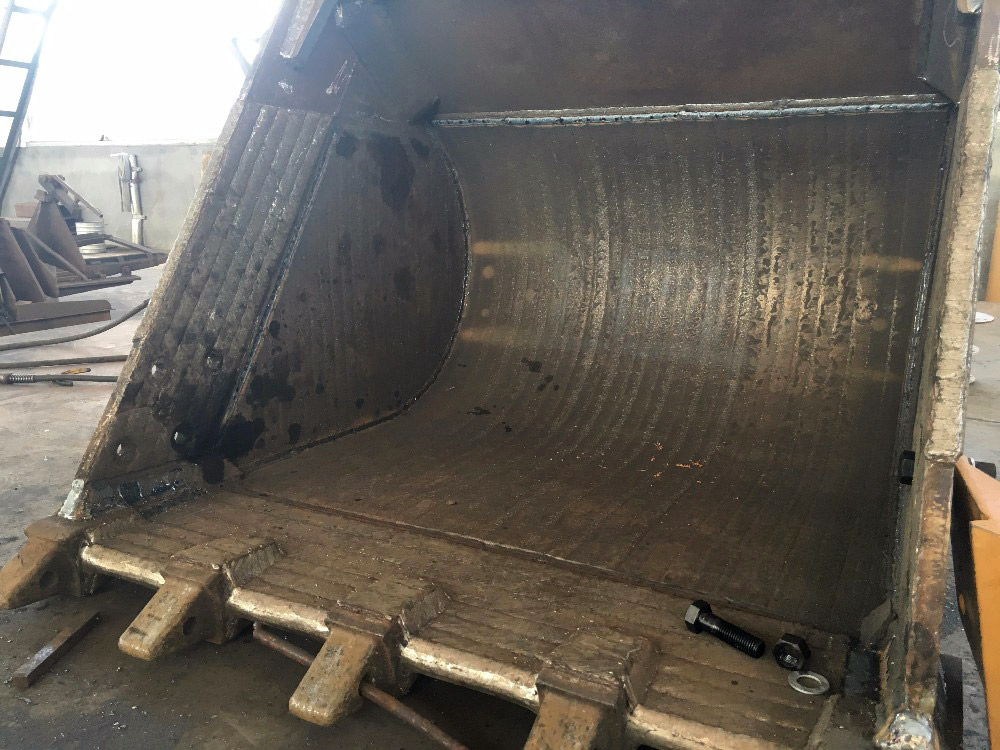Monday to Friday 9:00 - 17:00 (Beijing Time)

In harsh operating conditions like mines, quarries, and large construction sites, equipment wear is the “number one killer” of productivity. When your key components like buckets, cutting edges, and liner plates wear out, what do you do?
Most people’s first reaction is: “Check the manual, find the model number, and buy an OEM or off-the-shelf replacement part.”
That is certainly one option, but you might not realize it’s often a compromise. You’re using a “universal” solution to solve a problem that is unique to your operation.
Today, we want to introduce a better solution: Custom-Made Wear Parts. This isn’t just about replacing a part; it’s about injecting a dose of exclusive, powerful strength into the working life of your equipment.
Why “Off-the-Shelf” Might Not Actually “Fit”?
Standard parts are designed for the most common application scenarios. But your working conditions are unique, and the wear challenges you face are different:
Material Characteristics Vary: You might be handling hard iron ore, sticky clay, or highly abrasive sand and gravel. Each material impacts, cuts, and wears parts in distinctly different ways.
Equipment Work Habits Differ: Your operating techniques, work cycles, and load intensities create a unique “equipment fingerprint” that generic parts cannot optimize for.
Wear Patterns Differ: Take a close look at your worn old part. Are the tooth tips wearing fastest? Is the base plate wearing through? Or are the side walls tearing? Standard parts cannot provide special reinforcement for these specific “weak points.”
Using a “one-size-fits-all” solution often leads to suboptimal results, or even waste.
Tailored Solutions: Turning “Weak Points” into “Strengths”
When you choose customization, you transform from a “passive acceptor” to an “active designer.” You can work with engineers to forge a专属 “sharp sword” targeting your pain points.
1. Precise Matching for Maximized Efficiency
The core advantage of custom parts is “fit.” We can design precisely based on your equipment model, processed materials, and primary wear patterns.
Optimized Geometry: Customizing the bucket’s profile and angles can achieve lower penetration resistance, higher fill factors, and more complete unloading, directly boosting your productivity per cycle.
Localized Reinforcement: If your bucket’s base plate always wears through first, we can increase its thickness or use higher-grade steel during customization. If the lip is prone to cracking, we can target structural strengthening. Spend your money where it counts most, providing the strongest protection where it’s needed most.
2. Unexpected “High Cost-Effectiveness”
At first glance, the unit price of a custom part might be higher than a standard part. But when measured by Total Lifecycle Cost, its value-for-money advantage becomes clear.
Longer Service Life: Targeted design and material selection mean the part is more wear-resistant and impact-resistant, potentially lasting 1.5 to 2 times or even longer than standard parts. This means fewer replacements and lower part procurement frequency.
Reduced Downtime: Equipment downtime is the biggest cost sink. A more durable custom part significantly extends replacement intervals, thereby reducing unplanned downtime and safeguarding your production continuity. The cost savings here far outweigh the initial price difference of the part itself.
Improved Overall Efficiency: A custom bucket with a more rational design can increase load per pass and reduce fuel consumption, saving substantial costs at the operational level.
3. Proprietary Materials for Extreme Challenges
The material choice for standard parts is fixed. Customization opens the treasure chest of materials science for you. We can recommend and utilize the most suitable wear-resistant materials based on your needs:
High-Strength Wear-Resistant Steel (e.g., Hardox): Provides excellent resistance to abrasion and impact.
Abrasion-Resistant Plate (AR Plate): Handles high-stress abrasive wear.
Ceramic Composite Wear Materials: Inlay ceramic blocks in key areas for ultimate wear resistance.
Take Action: How to Start Your First Custom Order?
Customization isn’t complicated; the key is communication. Next time you need to replace a wear part, prepare the following information and contact a professional custom service provider:
1. Equipment Information: Brand, Model.
2. Application Description: What is the primary material being handled? (e.g., Granite, Wet Clay, Slag, etc.)
3. Wear Analysis: Take clear photos and videos of the old part, pointing out the most severely worn, most troublesome areas.
4. Performance Expectations: In which aspects do you want the new part to show significant improvement? (e.g., More wear-resistant, Lighter weight, Higher fill factor?)
Conclusion
In today’s increasingly competitive environment, every detail of cost reduction and efficiency improvement is crucial. Choosing a tailor-made wear part for your equipment is far from a simple purchase; it’s a strategic investment in enhancing production profitability.
Stop letting your equipment “make do” with standard parts. Choosing customization means opting for a more professional, economical, and forward-thinking approach to equipment management.
